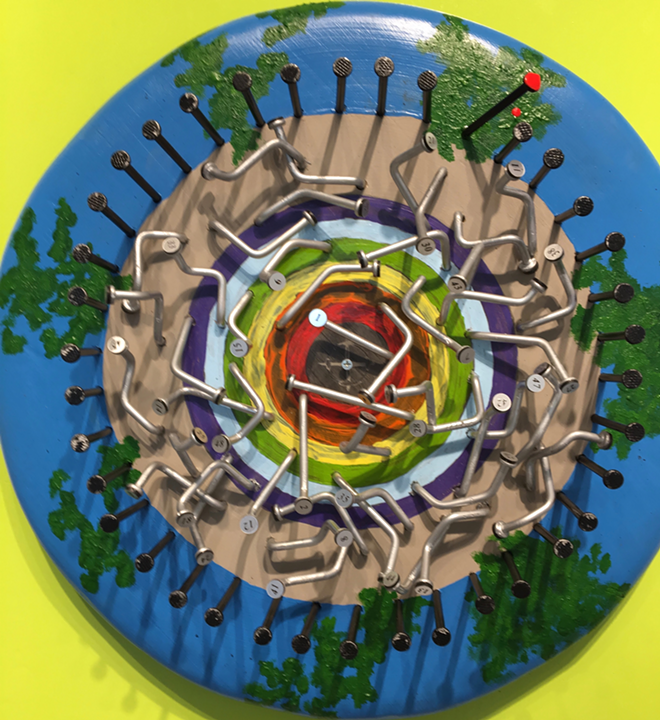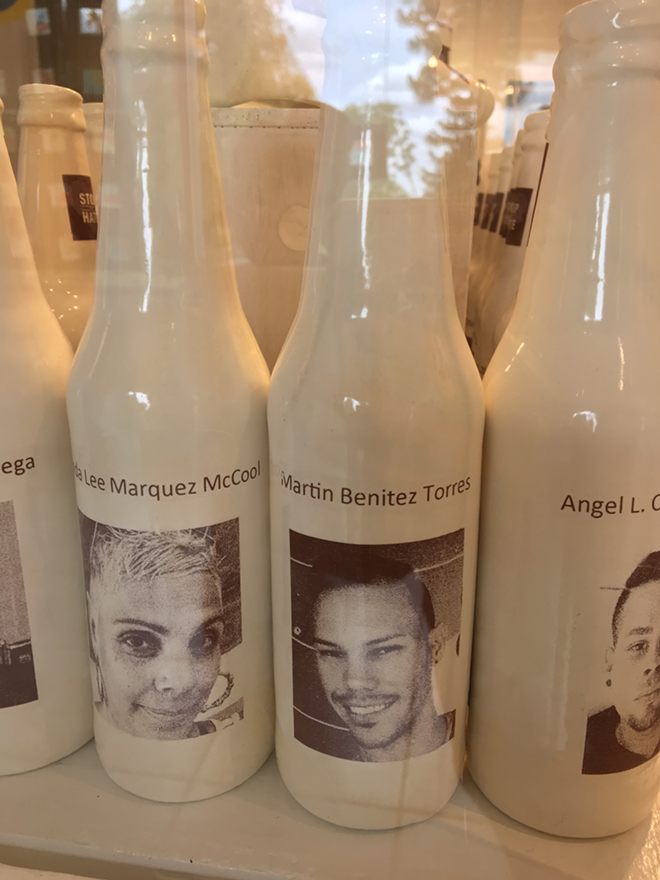The Summer of Love celebrates its 50th anniversary in San Francisco this summer.
All but two of the 49 humans who were murdered inside the Pulse Nightclub last summer weren't alive for the Summer of Love; none of them remain to celebrate its silver anniversary this year.
This tragic link makes Summer of Love: Reflections on Pulse exhibit at the Albin Polasek even more powerful. As you walk through the exhibit, the juxtaposition of lives lived in love and ended in hate hits you anew at each piece — and in a different part of your soul.

There's the disk with 49 bent nails, which evokes images of a police diagram of how the shooting must have looked and also calls to mind Martin Sherman's heartbreaking play Bent.
There's the painting of the swan superimposed over Lake Eola and a vigil; at the bottom, a swirl of gray and black paint creates a gruesome homage to the horrors inside the nightclub last June.
Sleeping With Angels has each victim's name on the hurdled form; in another, 49 milk bottles have 49 portraits of the victims, à la the "Have You Seen This Child?" campaign.
Some — like the oversized plush Rabbit — evoke whimsy with the exhortation to love how you want. Some seemingly have no ties to the tragedy or the Summer of Love at all. That's OK, says curator Rachel Frisby.
According to Frisby, the exhibit — an open call juried show — brought submissions from around the world. The idea was to remember the victims and honor their memories and to assert, as the museum's website asserts, "the Polasek Museum stands collectively with the firm belief that art has the power to transcend hate."


